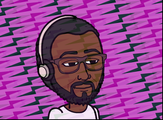The advent of the Kung-fu genre manifested in reaction to the Wuxia film; China's main form of dramatic fictional action. "Wuxia" loosely translates as martial hero and first arrived in the form of literature, circa 300-200 BCE. From its written origins came folk songs, then plays and then intricate theatrical representations. Eventually, the invention and rise of the motion picture led to the production of films and that would bring the most stark tales to audiences where honourable warriors would fight evil and corruption. Leaning heavily into the supernatural, the Wuxia narrative and style of action was often depicted within a fantasy setting, where heroes and villains would display physical feats beyond the normal human being. For the translation of these powers of prowess to the screen, Wuxia films came to heavily rely on trampolines and complicated wire-harness rigs, which would be used in order to create impossibly high jumps, simulate flying and cultivate increasingly inventive fight scenes. Films such as Crouching Tiger, Hidden Dragon (2000), House Of Flying Daggers (2004) and Hero (2002) are all perfect examples of the modern Wuxia film, with all of its classic motifs and tropes. Films such as Duel To Death (1982) and Kill Bill: Volume 1 (2003) are perfect examples of Wuxia and Kung-fu genre spliced together.
By the late 1960s, films such as One-Armed Swordsman (1967) which was leading to what would become the pure Kung-fu film, were already making international waves. But it wasn't until 1970, with the very same actor who starred in One-Armed Swordsman (Jimmy Wang Yu), that the world was introduced to open-handed Kung-fu, in the groundbreaking The Chinese Boxer. The Chinese Boxer aka The Hammer Of God, was the first film to layout all the elements that still go into making the modern-day martial arts film and it is interesting to note; that not only are there rougher depictions of fighting represented in the genre (in comparison to Wuxia's more balletic approach) but there was an immediate enlistment of many other martial arts styles (beyond Chinese forms) that would also become a major selling point for many-a-Kung-fu flick to come.
| THEN | NOW |
Poppin' is a style of dance that utilises illusionary style movements. It is characterised by a set of rigidly held body movements that lead to a flexing of the muscle to produce a pop a pose. Using concentric and eccentric contractions to release or hold the body, inbetween the pop, there are steps, glides and other motions that set up the next position to contract a pop. Poppin' was created by dancer Boogaloo Sam who was influenced to create the style whilst watching some 'Lockers' (Locking is another street dance) on TV. The movements of Poppin give the exponent a surreal, other worldly kineticism, probably the closest dance there is to magic. Breakin' or what would become incorrectly labeled as "Breakdancing" is a street dance that started in the 1970s and though it is currently known to be one of the hardest dances in the world to do, in its infancy, the repertoire of moves under the originators was minimal and performed only on the feet. Backspins, headspins, windmills and some of the most well-known signature moves of the dance would appear in later generations.
Both styles of dance were first seen in cinemas worldwide when the movie Flashdance, starring Jennifer Beals was released in 1983. And though the scenes in the movie that featured the dancing were short, they were still long enough to have a huge cultural impact. After Flashdance, films such as Breakin (1984), Breakin 2: Electric Boogaloo (1984), Beat Street (1984) and Krush Groove (1985) would be released, with part of their premise usually featuring these dances or the cultural scene they came from. This helped grow and sustain the fascination of the art form and a range of mainstream media soon jumped on the zeitgeist, appropriated the dance and tried to cash in on it. Breakin' became such a popular dance that it began being featured in everything and eventually made its way the world stage of the 1984 Olympics as part of the closing ceremony.
| THEN | NOW |
District 13 (Banlieue 13) is a 2004 film, set in a mild dystopia where the poorer members of society have been 'walled up' and made to live in self-contained urban communities. Each community is known as a 'district' and in the 13th enclave amongst the existing criminal element that already exists, an explosive device with a nuclear yield has been set, to go off in 24 hours. The film features two heroes; an undercover agent and a local resident who is skilled in Parkour and for many viewers, this was the first time that they had ever seen the art form. Pit against a fighting milieu, Parkour looked even more amazing than it would have in just the street.
| THEN | NOW |
In Lethal Weapon (1987), Mel Gibson's character Martin Riggs has to fight arch-villain Mr. Joshua played by Gary Busey. In a fight that takes place at night time, on a garden lawn, with a damaged water hydrant spraying water onto the scene, cops watch as the two go toe-to-toe using boxing, kick-boxing and brawling in order to try and take each other out. The fight culminates on the ground where the two trade techniques in Brazilian Jiu-Jitsu. That part of the fight was choreographed by UFC founder and Brazilian Jiu-Jitsu legend Rorion Gracie, the eldest son of Hélio Gracie whom with his brother (Carlos) formed Gracie Jiu-Jitsu. Not only is Rorion the first generation to learn from his father and uncle, but he is also the first to learn out of what would become a massive family clan of Brazilian Jiu-Jitsu exponents. As one of the earliest to be taught in the world, he is one of the few that has attained a 9th-degree red belt. Lethal Weapon was made for $15,000,000 and grossed $120,000,000, which means there were a lot of bums on seats, that saw this fight scene.
| THEN | NOW |
Freerunning is an offshoot of Parkour with a slightly different outlook. Whereas Parkour is more concerned with traversing obstacles in the most straight-forward way, if you are able to get past, through and over any obstacle, by just using three principle movements, this would be considered a success. In Freerunning, there is a competitive element and ethic of expressive showmanship where you are encouraged to find a personalised way of traversing your environment. Freerunning is more about using stylised movement to get from one point to another and there doesn't technically have to be anything in your way. In the clip below, Sébastien Foucan of the Parkour team "Yamakasi Group" can be seen using Parkour and Freerunning to evade 007.
| THEN | ALSO THEN |
The James Bond franchise has always prided itself on including inventive physical fights in his adventures. The train scene in From Russia With Love (1964) where 007 fights Red Grant, to this day is held as one of the best cinematic fights of all time and set a standard for not just choreography and its execution, but also in the tense drama that leads into the fight. Always dedicated to taking action cinema into a new stratosphere, it is in 007s fifth outing You Only Live Twice (1967) that much of the non-militarised populous were properly introduced to Japanese martial arts - depicted in a realistic manner. Sumo Wrestling, Ninjutsu, Kendo, Karate, Kenjutsu and Jiu-jitsu all featured in the film to great effect and Ninjutsu particularly stands out because of its more honest depiction. There are many films that deal with Ninjutsu, but what we are usually bombarded with is mysticism, fantasy and all manner of depictions that have no connection to the real art or how it was actually seen in society. However, with Bond's international appeal at this point, many people around the world would have been exposed to genuinely executed Japanese martial arts for the first time, including Ninjutsu.
| THEN | NOW |
In 1993, actor and martial artist Mark Dacascos starred in a film called Only The Strong. The film didn't perform particularly well in the eyes of the critics or at the box office, but like so many martial arts films that are not particularly hot in their narratives or acting, the film offered us our first big taste of the Afro-Brazilian martial art of Capoeira. This one film introduced the art to a multitude of people around the world, who had not seen anything like it and from this point, Capoeira's trajectory was drastically changed to make it as popular as any of the big Japanese or Chinese martial arts.
| THEN | NOW |



 RSS Feed
RSS Feed




